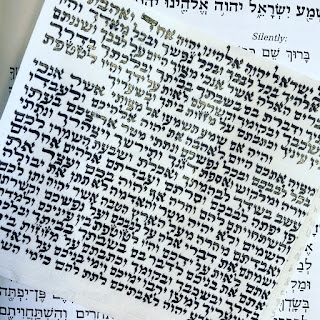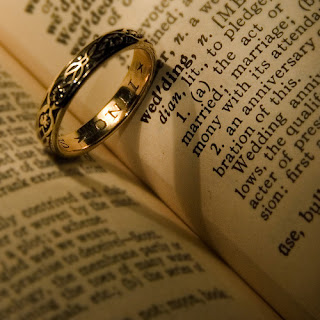Do We Trust The Torah?
Parashat
Mishpatim 2018
Rabbi
Esther Hugenholtz
Can you think of a moment in your life when
you decided to trust the Jewish tradition?
Sharing a personal perspective, I can cast
my mind back to a moment when I was asked to trust a sacred and transformative
moment. It was during my conversion ceremony. Prior to my immersion, I was
asked by my sponsoring rabbi the following, to which I was called to reply.
‘Have you come here of your own free will?’
‘Yes’.
‘Do you pledge allegiance to the God of
Israel?’
‘Yes.’
‘Do you pledge allegiance to the Torah of
Israel?’
‘Yes’.
‘And do you pledge allegiance to the People
of Israel?’
‘Yes.’
Answering yes to that triad of questions
was emotionally powerful in a way that transcended the legal underpinnings of
the procedure (even sharing it now still moves me). Of course, establishing
informed consent was a legally binding and necessary act. But it was also something
more. It was a moment of trust. A moment of saying, regardless of what happens,
I will stick with this.
This is where I belong, this is where I
need to be, this is the path that I will walk from now on. For those of you who
are married or have been married, you may be able to relate to that moment of
trust when you pronounced your vows (in some ways, my giyyur, conversion, my chuppah,
wedding and my semikhah, ordination opened
up that same register of transformative trust).
Vows, pledges, promises: plunges of love,
belonging, commitment. Ritual pageantry shapes transitional moments where one
claims agency in order to move into a new space, a new reality, a new place of
belonging. A new identity and perhaps in some way, a new self.
If that sounds a little intense, well, good
– it’s meant to. Liminal, transitional moments are ‘intense’ to downright
frightening which explains why so many cultures use ritualized decoys to contain
the vulnerability of that moment.
My sermon last Shabbat dealt with
Revelation and the Exodus in terms of science, history and meaning. Citing Dr.
Richard Elliot Friedman’s new book on the Exodus, I aimed to make a rationalist
argument in defense of the Torah and its message. Perhaps the Exodus really
happened, albeit in a different way than we expected. In any case, my argument
went, there are compelling reasons to accept the values we derive from such an
event, be it historical or symbolic.
It is a fine and coherent argument but I
now would like us to transcend it and take it in a different direction.
Mishpatim deals with the aftermath of
Revelation. The fires have died down and the dust has settled, the tones of the
shofar have faded. The magic of the experience has evaporated; what remains is
the memory and its emotional import. Mishpatim is a Torah portion that strives
to do different things. On one level, it performs a hermeneutical dance of what
the Rabbis would call ‘klal u’frat’, from the general to the specific. If the Aseret haDibbrot (Ten Commandments) represented
ten general principles, then the legal material of Mishpatim unpacks and
interprets them in specific, concrete ways. How we treat the vulnerable in our
society, those who dwell on the periphery. How we legislate justice. How we
safeguard the principles and integrity of monotheism.
Then there’s the other face of Mishpatim:
the mystical. There’s a strange scene where Moses and Aaron, and Aaron’s son’s
Nadav and Avihu (not his other two, Elazar and Itamar, which is telling if you
want to cast your minds to Parashat Shemini in Leviticus) go up the mountain
with seventy elders of the Israelites and see God in stunning, Technicolor
detail. They eat, drink and celebrate in a vision that is strange and esoteric.
‘Vaya’al
Moseh v’Aharon Nadav v’Avihu v’shiv’im miziknei Yisrael. Vayiru et Elohei
Yisrael v’tachat raglav ke’ma’aseh livnot hasapir uch’etzem hashamayim latahor.’
– ‘And Moses, Aaron, Nadav and Avihu and
seventy of the elders of the Israelites ascended. They saw the God of Israel
and beneath His feet, there was the working of stones of lapis lazuli like the
core of the purest heavens.’ (Ex. 24:9-10) (My translation).
Of course, such an anthropomorphic
description of the Divine encounter makes us uncomfortable – it certainly did
make the Rambam (Maimonides) uncomfortable who considered this envisioning of
God an intellectual rather a sensory experience. Even so, it is a telling
narrative that splits the soul of Mishpatim into two: the legal versus the
mystical, the rational versus the esoteric, the ethical versus the
experiential. Sitting as a fulcrum between these two readings of the portion
sits a passage that balances those opposites. Before Moses and his companions
enjoy their mystical experience, they and all the people at the foot of the
mount affirm the covenant after Revelation by bringing offerings – one for each
of the twelve tribes – and by taking a ‘sefer habrit’, a book (or record, or
perhaps deed or contract) of the covenant and read it aloud to the people (not
unlike a marriage license, a conversion certificate or a naturalization
document). ‘Kol asher diber Adonai
na’aseh v’nishmah’ they famously pronounced. ‘All that the Eternal has
said, we will do and we will hear.’
One could expound famously and thoroughly
on this one line alone. What I would like to focus on, however, is the element
of trust. The Israelites took the plunge (quite literally, according to the
Talmud in Tractate Yevamot 46, since the entire people immersed in a mikveh and
‘converted’ at the moment of Revelation). They didn’t look for symbolic meaning
or historical fact, like we did last week. They took an emotional risk. They
said a full-throated, whole-hearted yes, without having full knowledge of all
the consequences. Indeed this liminal, transitional moment is a scary one.
There is something profoundly
counter-cultural to this. As I mentioned during one of my Rosh haShanah sermons
on surrender, we as modern human beings like being in control. Trust doesn’t
come naturally to us and with good reason. There is a place for skeptical
inquiry and evidence-based scrutiny. But there’s also a place for trust, for
saying yes. There is a place for us seeking out ‘Elohei Yisrael’ in our own
way, to ‘gaze’ into the deepest core of our universe and ask ourselves, in a
healthy, life-affirming way: how can this holy Torah of ours touch and
transform my life?
How can Torah change our lives?
‘Na’aseh v’nishmah’ teaches us that
sometimes the experiential trumps the rational. We may have to try it before we
can say whether we like it. We may want to open ourselves up to wonder, to
being overcome with the unexpected.
To be receptive to those aspects of the
tradition that mystify us a little, perhaps. To try on a new mitzvah, a new
observance, a new way of seeing the world through the lens of the Jewish
tradition and trusting it to transform us somehow.
As we journey from Revelation onwards in
our annual cycle of reading the Torah, I would invite us to journey together.
To create a space in our lives for Judaism in ways we may not have encountered
it before. To pledge ourselves to a practice of Judaism that is intuitive and
experiential. To set ourselves a new challenge – in whatever way feels
appropriate to each of us – and to be willing to be surprised and delighted of
what this rich tradition can bring us.



Comments
Post a Comment